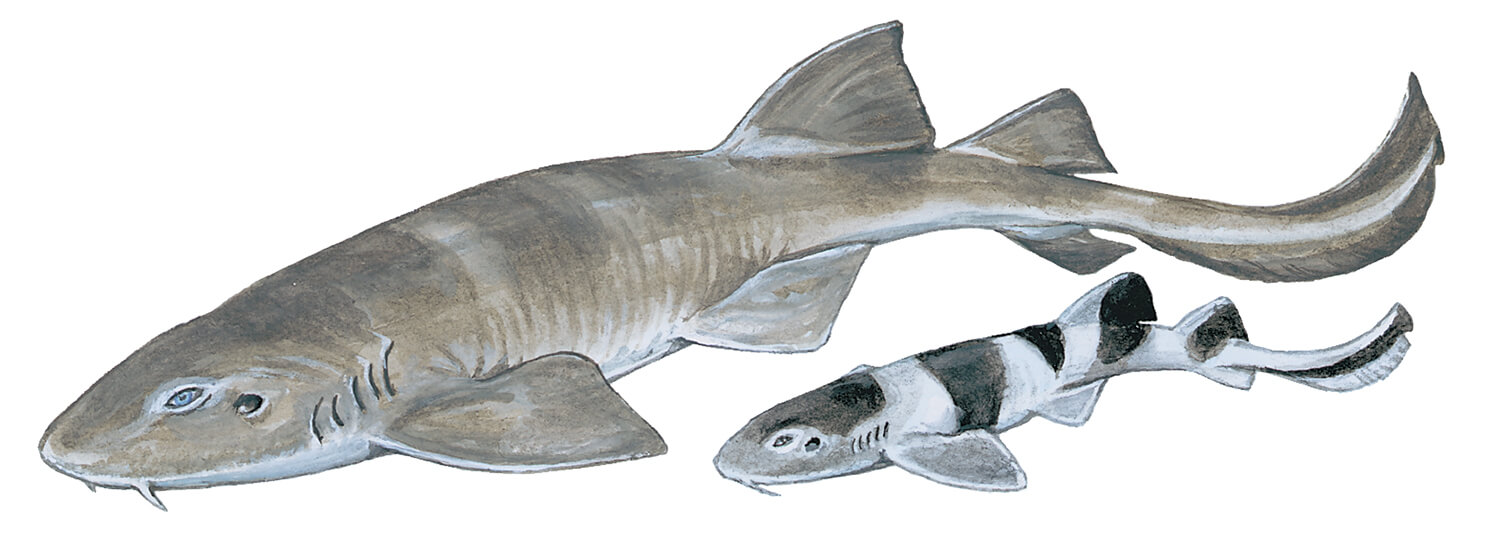Hello ladies and gents this is the Viking telling you that today we are talking about
THE BLUE GREY CARPET SHARK
The bluegrey carpetshark or Colclough's shark (Brachaelurus colcloughi) is an uncommon species of carpet shark endemic to shallow inshore waters off northeastern Australia. It is one of the two extant members of the family Brachaeluridae. The bluegrey carpetshark has a stocky body with a wide, slightly flattened head, dorsally placed eyes, and a pair of long barbels with posterior skin flaps. It has large pectoral fins, two dorsal fins of unequal size placed far back on the body, and a sizable space between the anal fin and the base of the caudal fin. Growing to 76 cm (30 in) long, this species has a black-and-white color pattern as a juvenile, which largely fades with age such as that adults are brownish.
When removed from the water, the bluegrey carpetshark will close its eyes like the related blind shark (Brachaelurus waddi). It feeds on benthic invertebrates and bony fishes, and is aplacental viviparous with females bearing litters of 6–7 pups. The International Union for Conservation of Nature (IUCN) has assessed this species as Vulnerable, given its rarity and restricted occurrence in heavily utilized waters. It is taken in small numbers by commercial and recreational fisheries, and for the aquarium trade.
The bluegrey carpetshark has a stout body with a long, slightly flattened head. The snout is blunt and looks wedge-shaped from the side. The large eyes are horizontally oval and placed high on the head, each with a strong ridge underneath and a large, round spiracles following immediately behind and below. The nostrils are preceded by a pair of long barbels, which have an enlarged posterior flap halfway along their lengths.
There are well-developed skin flaps and grooves around the incurrent nostril opening, as well as a pair of grooves connecting them to the small, almost transverse mouth. The tooth rows number 32–34 in the upper jaw and 21–29 in the lower jaw; each tooth has an upright, awl-like central cusp and two lateral cusplets. The five pairs of gill slits are short, with the fourth and fifth pairs more closely spaced than the others.
The pectoral and pelvic fins are broad and rounded, with the former larger than the latter. The two dorsal fin have rounded apices and are placed far back, with the first originating over the pelvic fin bases. The second dorsal fin is noticeably smaller than the first. The anal fin is less than half the size of the first dorsal fin and placed so that its free rear tip just reaches the base of the caudal fin.
The caudal fin is long and low and comprises about a quarter of the total length, with no lower lobe and a strong ventral notch near the tip of the upper lobe. The dermal denticles are tiny, smooth, and non-overlapping. Adults are grayish to golden brown above and white below, with faint darker saddles and white patches on the dorsal fins. Juveniles have a striking pattern of large black markings on a white background. This species can grow up to 76 cm (30 in) long.
And as always have a chilled day from the Viking.

Comments
Post a Comment